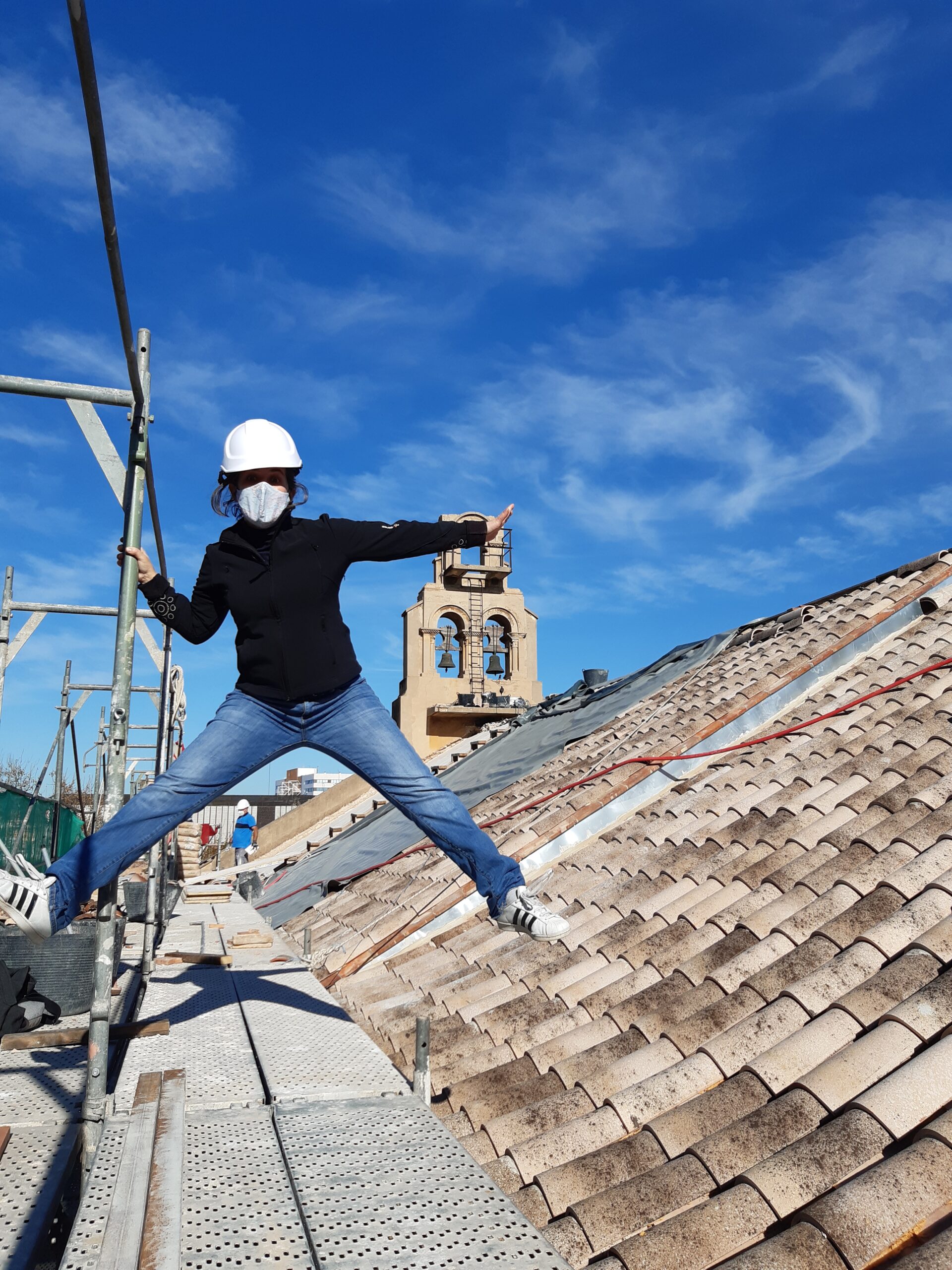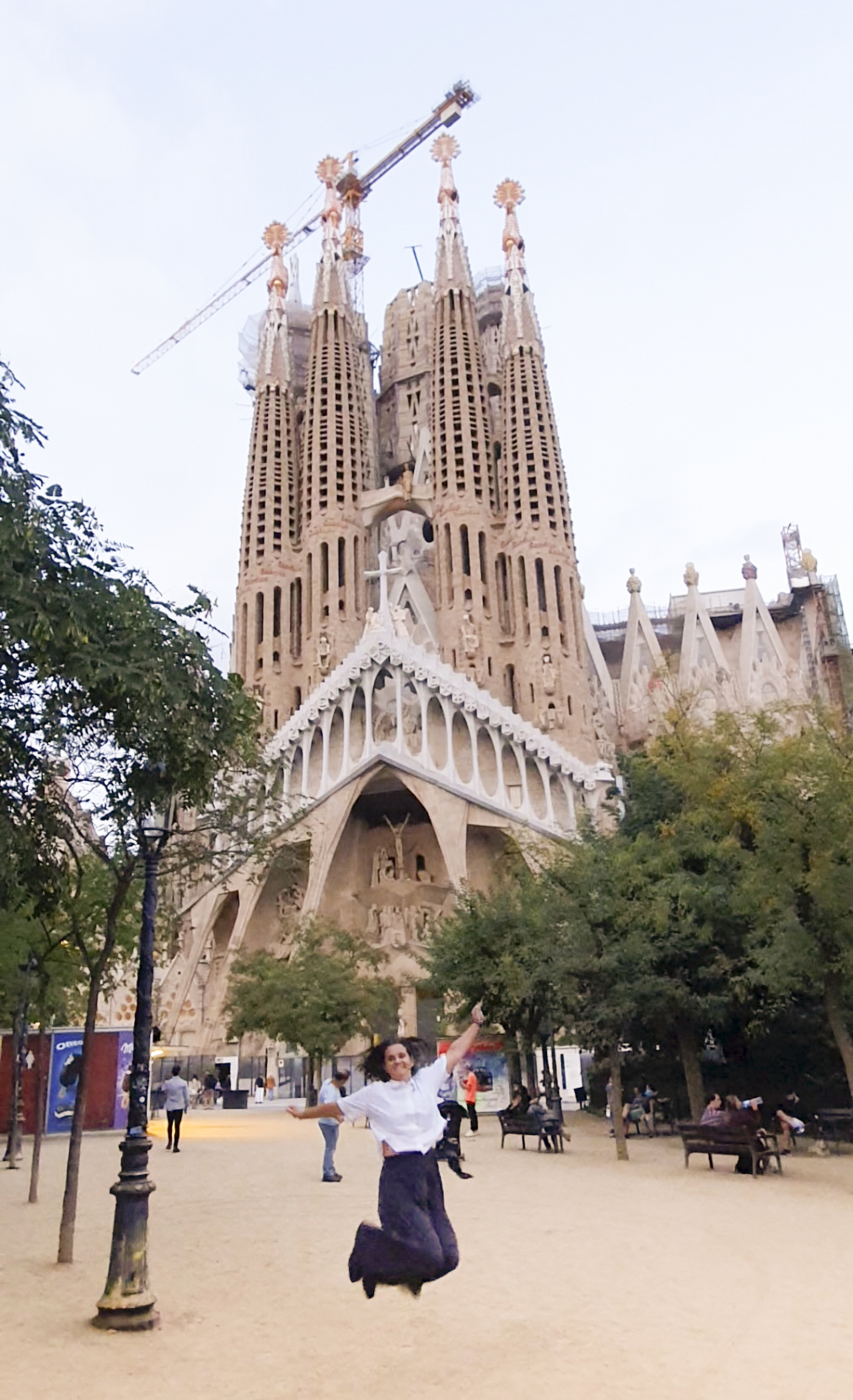
Angela López, the first prize winner of the #JumpForHeritage photo competition recently went on her trip to Barcelona, which was her prize for submitting the winning photo to the competition. While there, she enjoyed exploring and learning about the fantastic religious heritage sites of the city. She even took another #JumpForHeritage photo in Barcelona’s most famous religious heritage site, the Basílica de la Sagrada Família.
In addition to enjoying her trip, Angela agreed to participate in an interview with us to discuss her views on the importance of religious heritage and her work with her organisation ARAE Patrimonio y Restauración, based in Valencia, Spain.

What inspired you to join #JumpForHeritage?
We joined because we follow FRH on social media, and also because we are a group of architects that are working on the restoration of a church at this moment as well as running a cultural program, so we are involved in a lot of activities and we thought this competition would be a good activity to participate in. And also we thought it would be nice to show another point of view of the church because we were restoring the roof at this time and we thought it would be a nice view as well as an unusual view for, not only us, but the rest of the world.
What does religious heritage mean to you? What importance does it have for society?
We have the same objective as FRH. As I said, we are restoring a religious heritage building, but the community of Jesuits [who own the site] want to give a practical use to their church. It was a little church in an old school, the school’s chapel. The school has now disappeared. The education takes place in a different location and the building now hosts social activities. Nowadays, they don’t use the church whereas they used to use it all throughout the week for the students. At the same moment that we are restoring it, they want to open it to society, to the city, to all people and particularly young people, for a lot of cultural activities, and they want us to propose some solutions for this. I think that our goals and perspective is more or less the same as you [FRH]. It is a religious place, but also a cultural site and can be used as a multi-functional place. They used to be great spaces, so why not open them to people for more than just religious activities? So I think we’re working on the same line with the same objectives.
Do you think campaigns like #JumpForHeritage help raise awareness of these cultural heritage assets?
Oh yes, of course! In our team, we like to always show what we are doing via social media or in newspapers. We do a lot of workshops with children to teach them ancient construction techniques and so I think that showing this campaign means to show all of this hard work, and it shows people that it exists and they know the historic legacy. We like to use the sentence “you can’t love what you don’t know”. So because of this, we show everything we do and in that way, people feel that it is their own and they try not to lose it. So we feel that this campaign helps a lot.
And you mention these ancient techniques, do you think that there is a challenge in maintaining these traditional crafts in order to protect these buildings? Are we lacking in these skills?
Yes, of course. We always work in ancient techniques. If the church is built with a technique that was used a century ago, we try to find the technicians and craftsmen who know how to work in this way. It’s not always easy because we have to use things like concrete. But its important. It’s harder, but we feel that we need to conserve these traditions. But also, to work in the traditional way is also a way to work towards the SDGs (Sustainable Development Goals) because we are sure that that’s a sustainable way of construction.
What, in your opinion, is one of the best ways we can protect religious heritage? What is one of the strongest ways in order to do this?
As I said before, we need to open up to everyone in society, now in the global world religions and cultures are mixing. Societies do not all follow one religion. We need to open to everybody, not just Catholics, but also to others. To all religious ways of thinking, but also to other cultural activities, or just social activities because these buildings are really great places for communities and for sharing things. So I think that’s the way of the future, to continue having religious activities there, of course, but also to open it.
Is there anything else you would like to say?
Thank you very much for the prize, we were very surprised. Continue making these campaigns and we will be sure to be there participating because this is a really good way of showing and sharing religious heritage!





Follow us: